Home Infusion: Frequently Asked Questions
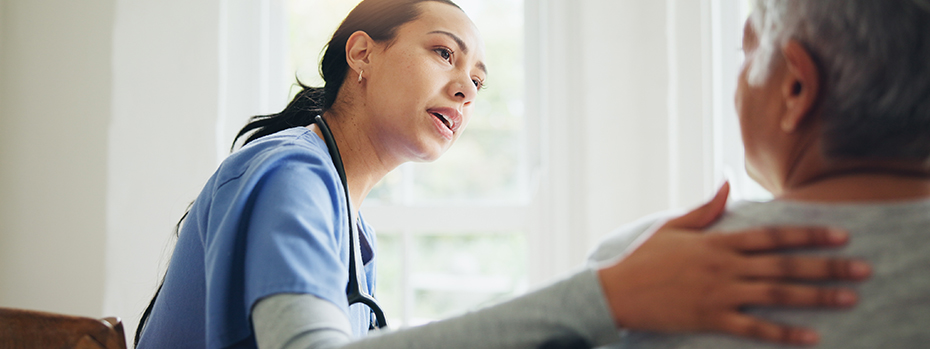
Here are answers to frequently asked questions about home infusion therapy and services with OHSU.
How do I prepare my home for an infusion visit?
Please prepare:
- A clean table or counter area
- A work surface that can be cleaned often
- Access to an empty sink
- Paper towels
- A small trash can
It is helpful to put pets away and to have no smoking during visits.
While we’re in your home, we will check that it is still safe for your infusion therapy. We can help you with any safety concerns.
Can I ask my infusion nurse for other care while they’re at my home?
No. Infusion nurses can provide care only related to infusion therapy. They aren’t approved to provide other care.
How do I take care of my IV line?
You need to flush your IV line to keep it clean and clear of blockages. If you take more than one infusion medication, flushing the line helps keep your medications from reacting with each other.
An OHSU infusion nurse or pharmacist will explain how to care for your line.
When should I contact my nurse?
Call your home infusion nurse if you see any of these signs or have other concerns:
- Trouble flushing your IV line
- Anything unusual that stops the infusion
- A wet or loose bandage over the catheter where it enters your body
- An alarm or error message on an infusion pump
How should I store infusion medications and supplies?
Medications and supplies should be stored in a dry place where children and pets can’t reach them. Avoid storing them in bathrooms or humid areas.
Most medications need to stay cold.
- Use a refrigerator. The top shelf is best. Avoid the door and the freezer.
- If you use a mini fridge, keep medications as far from the freezer area as possible.
- Keep the refrigerator temperature between 36 and 46 degrees Fahrenheit.
- Keep medications in the plastic bag they came in.
- Keep medications away from raw meat.
Some medications need to be kept away from light. These will come in a dark yellow bag. Keep medications and supplies organized so you know when to reorder.
When is a medication unsafe to use?
A medication may be unsafe and should not be used if:
- It’s warm to the touch.
- It doesn’t look the way you expect.
- It’s leaking or in a container that’s broken or missing a cap.
- It wasn’t put in the refrigerator within eight hours of delivery.
- The label doesn’t say what you expect.
- The label has a “discard after” date that has passed.
If you see any of these signs or have other concerns, don’t use the medication. Call our Home Infusion Pharmacy at 503-346-3850 and choose option 3 to talk with a pharmacist between 8 a.m. and 5 p.m. weekdays. If you’re calling at other times, ask for the Home Infusion Pharmacy.
Never use a microwave to warm up medication.
How do I refill my medication and supplies?
We will call you to schedule refill deliveries. Please make sure we have correct contact information for you so you don’t miss a call or delivery.
We don’t send refills automatically. We need to talk with you or your support person before we can refill your medication.
If you have questions about refills, call our Home Infusion Pharmacy at 503-346-3850 and choose option 4.
Can I return medications or supplies?
No. Federal rules don’t let us accept returns of medications or supplies.
You may be able to donate unused supplies or saline flush to groups that provide medical aid.
If you need help disposing of medications, call our Home Infusion Pharmacy at 503-346-3850 and choose option 4.
Can I put needles and syringes in the trash?
No. Place needles, syringes, broken glass capsules, blood and body fluids in the red sharps container that we give you.
When the container is about three-quarters full, you can dispose of it using the provided box and return label. To ask for a new one, call our Home Infusion Pharmacy at 503-346-3850 and choose option 4.
You can check with the company that takes your trash and recycling about the best way to dispose of other items.
Can I travel while I’m on home infusion therapy?
Maybe, but it’s best to check with your provider before planning a trip.
If you plan a trip, please let us know as soon as possible. Call our Home Infusion Pharmacy at 503-346-3850 and choose option 2 to talk with a nurse. We can help you make a plan to care for your IV line, including how to get urgent or emergency care.
Learn about airport screening for people with medical conditions.
Is home infusion therapy covered by insurance?
That depends on your plan. It’s best to check with your insurer.
If you have Medicare Part B, you may qualify for the Home Infusion Therapy Benefit. It covers some home infusion services, including nursing. If you have questions about your coverage, please call our Home Infusion Pharmacy at 503-346-3850 and choose option 6.
See if OHSU takes your insurance.
Infusion therapy devices
Infusion therapy uses a range of devices to place medication or other fluids directly into your bloodstream.
Your care team will work with you to choose the best infusion device for your needs. The most common devices are catheters and ports.
Peripheral venous catheter
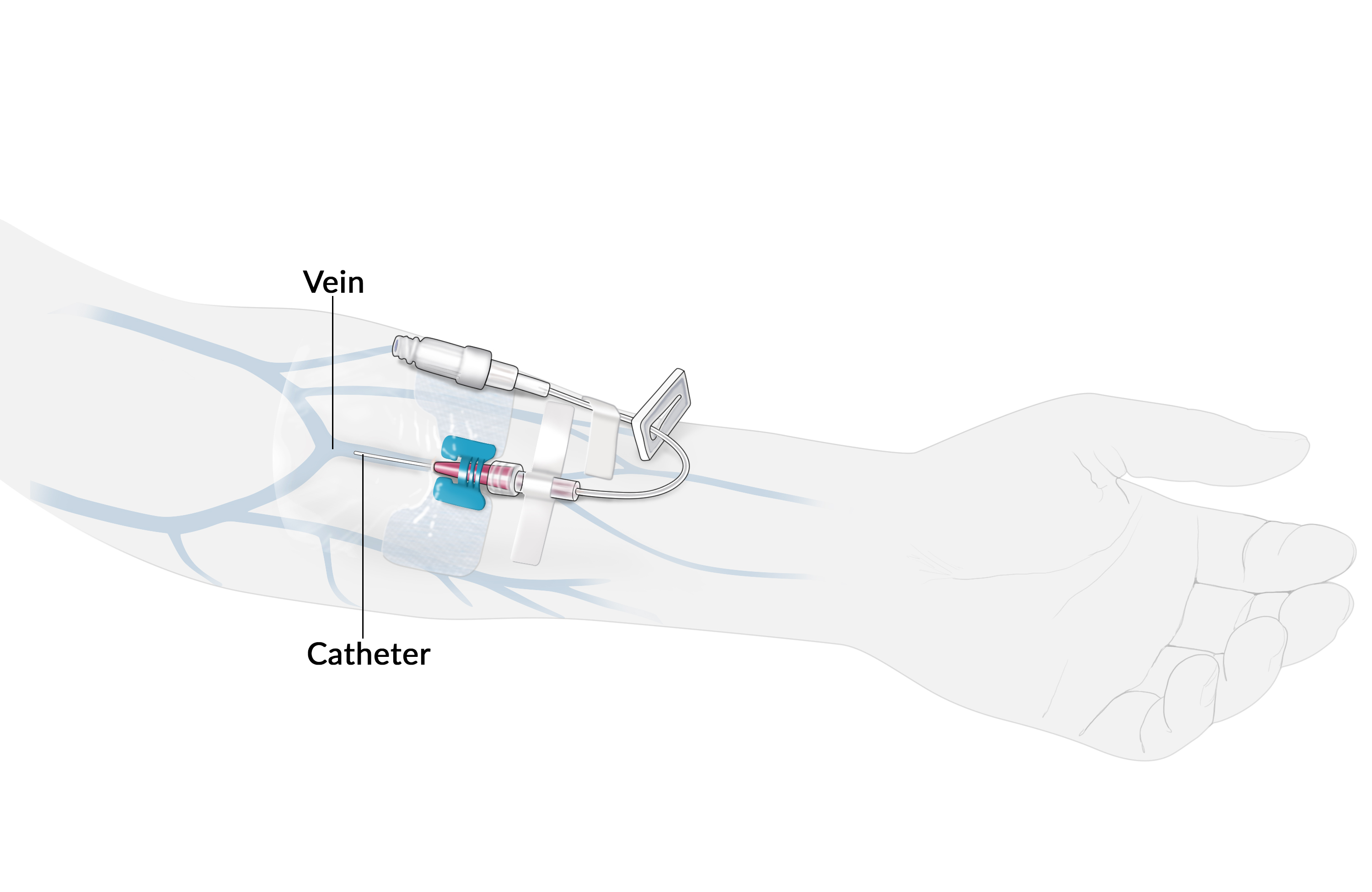
Central venous catheter
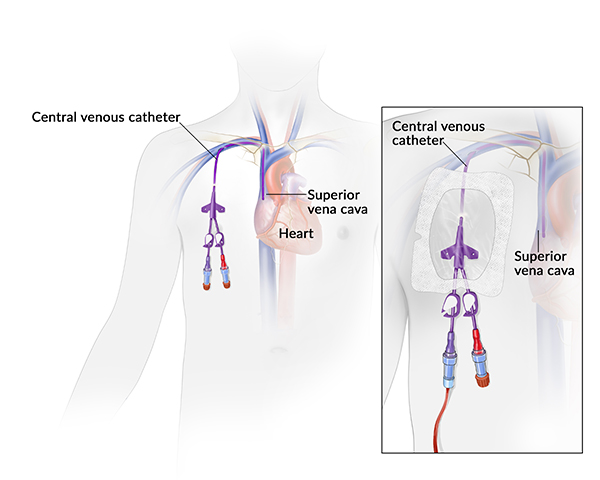
Peripherally inserted central catheter (PICC)
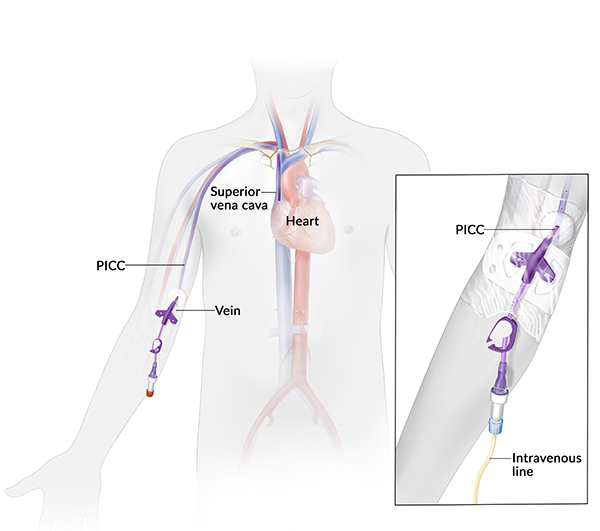
Port-a-cath
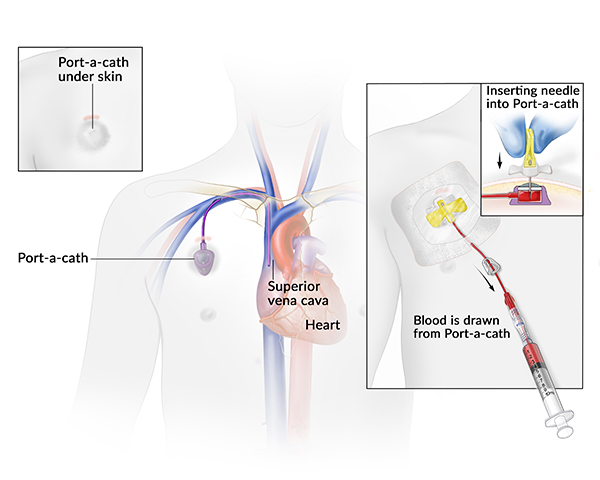
Contact us
Call: 503-346-3850, 8 a.m. to 5 p.m. weekdays. If you are calling about an urgent matter at another time or on a holiday, choose option 1.
Locations
OHSU Home Infusion Pharmacy, Beaverton
9317 S.W. Nimbus Ave.
Beaverton, OR 97008
OHSU Adventist Infusion Room
Adventist Medical Center Pavilion
10000 S.E. Main St., Suite 346
Portland, OR 97216
Free parking for patients and visitors
Refer a patient
Call: 503-346-3850, option 1